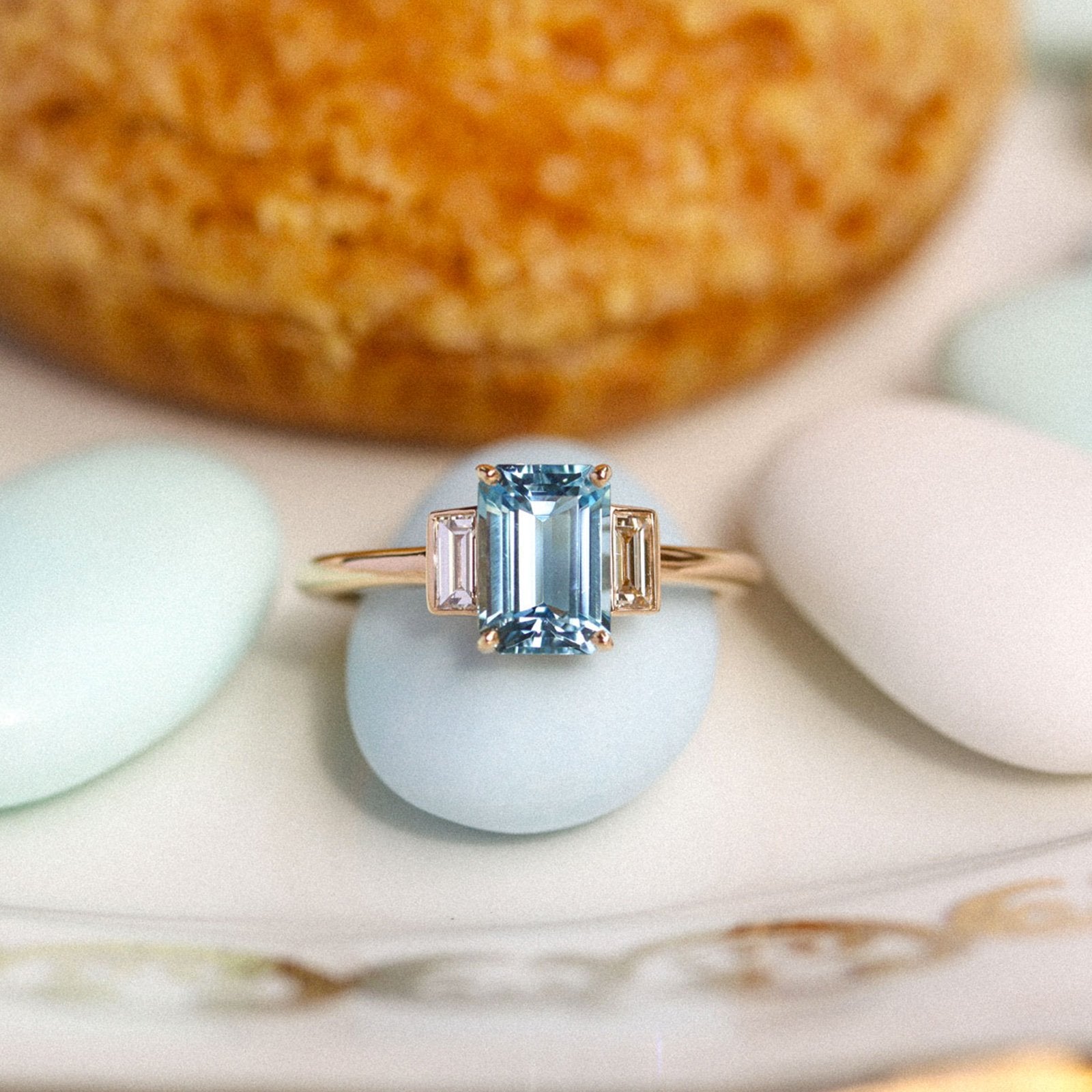
Precious stones: a dive into the heart of the earth
|
At a time when the “Precious Stones” exhibition at the Grande Galerie de l'Evolution de Paris opens its doors, let's explore these stones and their chromatic palette that allow jewelers-designers to 58 Facettes to express all their talents.
|
 |
Precious stones: the great classics
|
The most famous and imposing diamonds are the Koh-I-Noor of 105,6 carats from the old Indian mine of Golconda which adorns the crown of England and the Cullinan of 530,2 carats from a diamond South African rough weighing 3106 carats, set on the scepter of the British crown. The diamond is not necessarily white… But on the contrary, the rarest diamonds are Australian reds, green or even blue such as the blue moon, reaching the record of $ 48,46 million for 12,03 carats.
|
 |
 |
In the corundum family, the most sought-after sapphires are those from Kashmir with an incomparable intense blue. They are fetching record prices in auction houses like the Jewel of Kashmir sold at $ 243.000 per carat. Sapphires from Ceylon (now Sri Lanka) are also particularly prized for their color and Sri Lanka remains the current largest producer of sapphires and the only country that produces the pink-orange Padparadja sapphire.
|
|
Another corundum, the most sought-after ruby comes from the Mogok valley of Burma with its mines which produce rubies with an intense color, called "pigeon's blood". With the sanctions liées to the policy of Burma, new deposits were found as in Mozambique, a subject which we will detail later.
|
 |
 |
Emerald, from the beryl family, is fascinating with its multiple inclusions which are also poetically called gardens. The oldest mine is that of Muzo in Colombia, operated in the 16th century by the Spanish conquistadors. The Muzo mine and the various mines in Colombia remain the benchmark for the most beautiful emeralds that so fascinated Elizabeth Taylor.
|
Semi-precious stones: infinite chromatic diversity
|
Of course, some fine stones are also very rare such as Tanzanite sourced only from Tanzania and offering a particularly captivating electric blue-violet.
|
 |
 |
In the beryl family (the same as the emerald), stones likeaquamarine and morganite bring their soft shades of blue and pastel pink. Heliodor has an incomparable solar color and black and red beryl offers mysterious dark colors.
|
|
The tourmalines come in wonderful hues ranging from pink (also called rubellite when the color is dense) to green to black. Paraiba tourmaline from Brazil is extremely rare and highly sought after for its electric blue hue, although deposits in Africa offer new deposits.
|
 |
 |
The garnets are best known by the general public for their dark red color, but they can have bright colors like green spessartite garnet or almost neon orange mandarin garnet.
|
|
The opals from Australia and Ethiopia are fascinating with their chromatic effects, in particular harlequin opal formed of iridescent rhombus glitter.
|
 |
 |
The family of quartz is particularly rich with the rock crystal offering a beautiful transparency allowing to realize decorative objects. The citrine is seductive with its hues of lemon yellow to orange yellow. Rose quartz is fascinating with its opaque, almost milky parts. In the quartz family, many stones are opaque that we will discover in the next chapter.
|
Hard or ornamental stones
|
Some fine stones are considered ornamental stones because these gems were mainly used for ornamentation in the form of marquetry on wood or marble. Coming from the Italian term Pietra Dura, these hard stones are generally opaque coming in particular from the quartz family: agate, onyx, tiger eye, jasper, chalcedony.
|
 |
During the period Art Déco, these stones were used frequently and associated with lapis lazuli, turquoise or diamond. Today, these stones are particularly fashionable, cut in the form of clovers, hearts or squares, used on long necklaces or in the form of small rings playing on the combinations of colors. The jewelers-creators of 58 Facettes also have their personal interpretations that we invite you to discover in pictures.
Article written by Kyra Brenzinger - Editor-in-chief.
Photo 1: “Precious Stones” exhibition poster from the Grande Galerie de l'Evolution in Paris
Photo 2: Emerald cut diamond
Photo 3: Padparadscha sapphires - Avani Paris
Photo 4: A Love Like Blood ring - Laurent Barateau
Photo 5: Solitaire Anjar - Manal Paris
Photo 6: Triangle stud earrings - Lucky One Jewelry
Photo 7: Roma Mela Verde ring - Manal Paris
Photo 8: White gold, tourmaline ring - Atelier-Christely
Photo 9: "Las Vegas" pendant - Anne Bourat
Photo 10: Anew Bracelet - Kalathea
Photo 11: Black silver pendant, quartz with inclusions, citrine - Atelier-Christely
Photo 12: Favorite 1 ring - Dangleterre